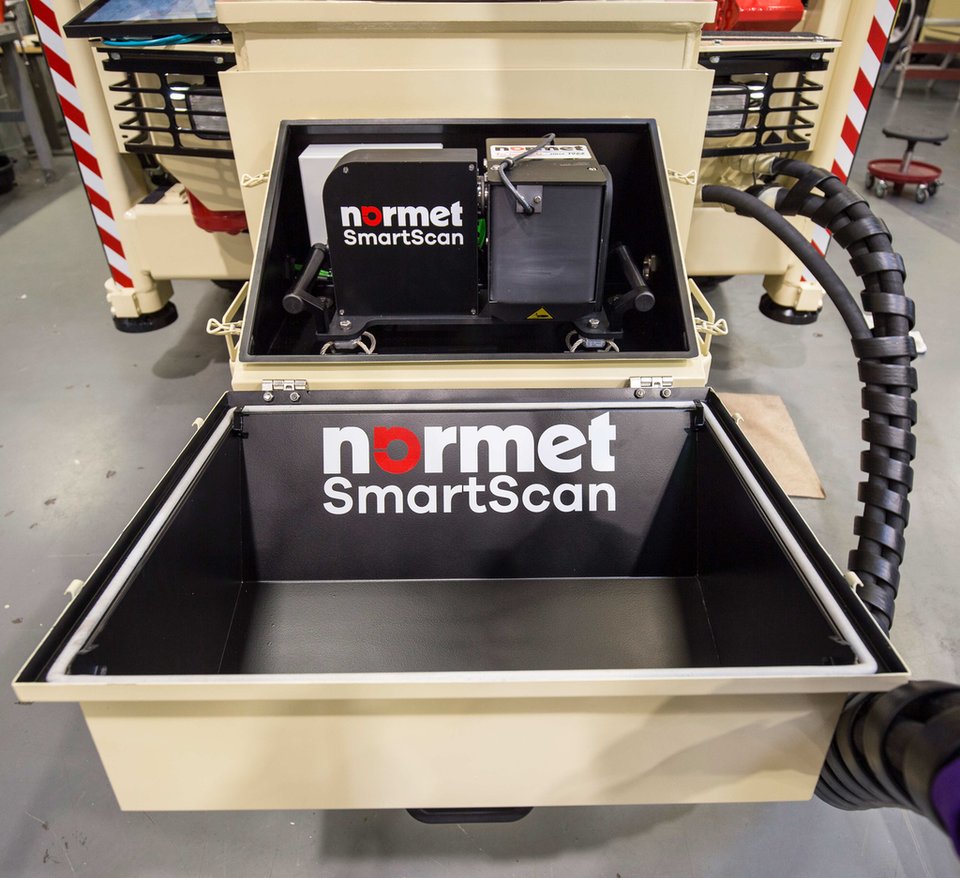Normet brought its sprayed concrete layer thickness control system, the SmartScan, to the market in 2019. The SmartScan is aimed at all underground sprayed concrete applications to deliver accurate and reliable sprayed concrete layer thickness information for the sprayer operator, and fast and easy reporting for management purposes.
The main purpose of the SmartScan system has been to control the layer thicknesses during the process, so that the required layer thickness can be assured with the first application, without expensive over spraying and without the need to come and re-spray the under sprayed areas. Reporting tools have included fast pdf reporting straight out of the on-board Live software or further analysis and reporting using the Desktop software.
Normet says it is known for its way of working closely with end users to develop products and solutions. “Also, the features and functionalities of the SmartScan system have been engineered in cooperation with the tunnelling and mining companies. As the next phase of development, Normet announces SmartScan being capable of producing georeferenced point clouds and layer thickness maps straight out of the system with the introduction of SmartScan Align.”
“Many of our customers have been requesting this feature when they have seen the potential that the SmartScan has in advanced reporting, as-built documentation and BIM modelling” says Panu Oikkonen, Director Underground Process Excellence from Normet. “SmartScan Align is available throughout our sprayer fleet and with it our customers can georeference the scan results and thickness maps in any coordinate system of their choice.”
Looking next at training, Normet has been offering technical and operator training since the production of sprayers started in the 1970s. “The tools to offer the training have developed quite a deal during the decades. Since the days of shouting instructions over the noise of the compressor Normet has come to using the latest VR technology to be able to arrange safe, thorough and cost-efficient training where ever it is needed.”
“Spraying concrete is one of the most demanding underground tasks” says Harri Sonninen, Specialist Technical Training at Normet. “The operators really need to know what they are doing in order to achieve the high-quality standards set to sprayed concrete structures today.”
In celebration of the Hagerbach test tunnel 50th anniversary Normet has introduced its renewed Virtual Reality spraying training simulator with new training environments, enhanced adjustable sprayer operating values and concrete mix behaviour. “These are full blown digital twins of our sprayers, underground conditions and real concrete,” Sonninen continues.
Perhaps the most noticeable change in the simulator for the whole industry is the development of an EFNARC C2 certified operator training course. “EFNARC, the international association of Experts for Specialized Construction and Concrete Systems, has developed sprayer operator certification schemes to comply with the tightening industry standards, safety requirements and environmental aspects since the launch of the Nozzleman training, assessment and certification scheme in 2009,” explains Max Eckstein, president of EFNARC. “C2 is the latest development for operator training and certification with integration of VR simulator technology,” continues Eckstein. “We’re excited to have Normet on board to support EFNARC C2 trainings.”
“Sprayed concrete is one of the tightest regulated processes in underground construction,” says Panu Oikkonen, Director Underground Process Excellence from Normet. “This is because especially in tunnelling the sprayed concrete structure is there to protect the underground facility and it’s users for the decades or even centuries to come. Modern civil engineering has means to design extremely durable structures with moderate layer thicknesses, but in the end it all comes down to the quality of the application. The operator plays key role here,” adds Oikkonen.











